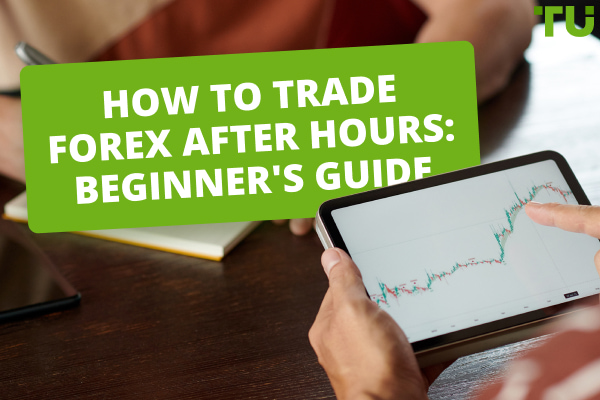Forex Pairs With The Tightest Spreads
According to Bank of International Settlements (BIS) these pairs in 2024 include:
-
EUR/USD (Euro/US dollar) - 22.7% of total turnover, avg spread is often near 0.1-0.2 pips
-
USD/JPY (US dollar/Japanese yen)- 13.5% of total turnover, extra tight spread 0.1-0.2 pips
-
GBP/USD (British pound/US dollar) - 9.5% of total turnover, tipical spread 0.2-0.4 pips
-
USD/CHF (US dollar/Swiss franc)- 3.9 of total turnover
-
AUD/USD (Australian dollar/US dollar) - 5.1% of total turnover
In a world where financial efficiency is paramount, Forex traders are constantly on the lookout for cost-effective In a world where financial efficiency is paramount, Forex traders are constantly on the lookout for cost-effective trading strategies. The quest for such strategies often pivots around one crucial aspect - the cost of trading currency pairs.
The purpose of this article is to help understand the search for the cheapest Forex pairs to trade, offering traders a path to potentially increase their profit margins by minimizing trading costs.
The cheapest forex pairs to trade are typically the major currency pairs, which are the most liquid and have the tightest spreads.
-
Factors that affect Forex trading costs?
Forex trading costs are influenced by factors such as the spread, broker commissions per lot, and broker liquidity. The spread, representing the difference between buying and selling prices, directly impacts transaction costs, while broker commissions add an additional fee. Currency pair and liquidity and market conditions further affect costs.
Cheapest Forex pairs to trade
The allure of trading within the Forex market remains undiminished, particularly when it comes to the major currency pairs.
These pairs not only promise voluminous liquidity, but also provide the advantage of tighter spreads, making them the foundation of cost-effective trading strategies.
-
EUR/USD: At just 0.1-0.2 pips, the Euro to US dollar stands as the epitome of a trader's haven. This pair, representing two of the world's most formidable economies, boasts not only a remarkable liquidity profile but also a spread so narrow it paves the way for high-frequency trading with diminished transactional costs. In addition, it is the most liquid currency pair, accounting for about 23% of global turnover, which will also reduce the final cost of each transaction
-
USD/JPY: The US dollar against the Japanese yen, with a spread of 0.1-0.2 pipst. Its volatility patterns and the economic stature of its nations make it a pivotal pair for traders seeking minimal expense without compromising market depth. USDJPY share in the global turnover is 13.5% that make it one of the most liquide pair to trade.
-
GBP/USD: The British pound to US dollar, a pair often swayed by geopolitical winds, stands at 0.2-0.5 pips. This pairing is a financial confluence of legacy and power, providing a spread that balances cost with opportunity.
-
USD/CHF: Trading at a spread of 0.1-0.3 pips, the US dollar to Swiss franc embodies stability. Switzerland's economic policies often lend this pair a safe-haven status, appealing to traders who are looking for low-cost trading amidst economic uncertainties.
-
AUD/USD: The Australian dollar against the US dollar concludes our list with a spread of 0.2-0.5 pips. This pair mirrors the pulse of commodity markets and maintains a spread that is compelling for traders interested in sectors like gold, often correlated with the Aussie dollar's movements.
These pairs are consistently monitored for their affordability and reliability, making them the prime choices for traders who are looking to maximize efficiency and minimize costs.
Tips for finding the best forex trading conditions
Navigating Forex markets for the best deals demands a blend of vigilance and strategy.
Compare brokers: Differences in spreads are often rooted in their specific liquidity sources and account offerings. Engage in comparative analysis via financial forums or dedicated comparison services to discern these variations.
Below is a comparison table of the best Forex brokers with tightest spreads:
| Broker | EURUSD avg. | GBPUSD avg. | USDJPY avg. | AUDUSD avg. | Raw account fee (per lot) | |
|---|---|---|---|---|---|---|
0.1 |
0.3 | 0.1 |
0.4 |
$3.5 |
||
0.1 |
0.5 | 0.2 |
0.3 |
$3.5 |
||
0.1 |
0.3 | 0.2 |
0.2 |
$2 |
||
0.1 |
0.5 | 0.30 |
0.4 |
$3 |
||
0.40 |
0.90 | 0.2 |
0.50 |
$1.20 |
||
0.10 |
0.30 | 0.2 |
0.20 |
$3 |
||
0.17 |
0.59 | 0.26 |
0.17 |
$3.5 |
||
0.1 |
0.7 | 0.2 |
0.4 |
Volume based |
||
0.10 |
0.60 | 0.30 |
0.50 |
$3 |
Dive deeper into types of accounts available: Brokers may offer standard, ECN, or STP accounts, each with distinct spread structures. ECN accounts, for example, can provide tighter spreads due to their direct access to market prices, although they might come with higher initial deposit requirements.
Consider the size of your trades: Smaller lots such as mini or micro can reduce spread costs and offer greater control over risk management. This is particularly advantageous for those refining strategies or looking to trade in a more agile manner.
Using these tips, traders can position themselves to capture the most favorable spreads, optimizing their trade execution and conserving capital.
What is spread?
Spread, in the vernacular of Forex trading, is the difference between the bid price and the ask price of a currency pair. It is a fundamental component, a cost that is embedded in every trade executed within the currency market. The bid price is what buyers are willing to pay for a currency, and the ask price is what sellers are asking for it.
The convergence of these two prices in the marketplace is what creates the spread—a pivotal metric that every trader must consider when entering and exiting positions. This price differential is often the Forex brokers’ compensation for facilitating the trade, reflecting the immediate cost of trading a currency pair.
To understand the spread is to appreciate its two-fold nature: it is both an indicator of market liquidity and an influencer of trading profitability. A narrower spread indicates a currency pair with a high volume of trading activity, suggesting that the cost to enter and exit positions will be lower, which is inherently advantageous to traders. Conversely, a wider spread hints at less liquidity and potentially higher trading costs.
Factors that contribute to a low spread
Several factors play a decisive role in the width of the spread for a currency pair, with two being at the forefront.
-
Liquidity: Liquidity is arguably the most significant contributor to a low spread. It represents the degree to which a currency pair can be bought or sold at stable prices. A highly liquid currency pair — like the major pairs mentioned earlier — has a large volume of buyers and sellers at any given time, which tends to result in a lower spread. This is because the abundance of market participants ensures that trades can be executed quickly, with minimal disparity between the bid and ask prices.
-
Competition: Competition among Forex brokers is another driving force behind the size of spreads. In an industry where numerous brokers vie for the business of traders, competitive pricing becomes a key differentiator. Brokers who offer lower spreads can attract more traders, especially those who are cost-conscious and trade frequently.
The spread is not just a number, it’s a reflection of market dynamics, influenced by liquidity and competition. For traders, understanding these factors is crucial as they seek to minimize trading costs and maximize potential returns.
Conclusion
In conclusion, the cheapest Forex pairs to trade are the major currency pairs. These pairs have the lowest spreads, which can save you money on your trading fees.
However, it is important to note that the cheapest pairs are not always the best pairs to trade. You should consider how the strategy and indicators work on the currency pair you are considering trading.
Team that worked on the article
Vuk stands at the forefront of financial journalism, blending over six years of crypto investing experience with profound insights gained from navigating two bull/bear cycles. A dedicated content writer, Vuk has contributed to a myriad of publications and projects. His journey from an English language graduate to a sought-after voice in finance reflects his passion for demystifying complex financial concepts, making him a helpful guide for both newcomers and seasoned investors.
Dr. BJ Johnson is a PhD in English Language and an editor with over 15 years of experience. He earned his degree in English Language in the U.S and the UK. In 2020, Dr. Johnson joined the Traders Union team. Since then, he has created over 100 exclusive articles and edited over 300 articles of other authors.
The topics he covers include trading signals, cryptocurrencies, Forex brokers, stock brokers, expert advisors, binary options. He has also worked on the ratings of brokers and many other materials.
Dr. BJ Johnson’s motto: It always seems impossible until it’s done. You can do it.
Mirjan Hipolito is a journalist and news editor at Traders Union. She is an expert crypto writer with five years of experience in the financial markets. Her specialties are daily market news, price predictions, and Initial Coin Offerings (ICO). Mirjan is a cryptocurrency and stock trader. This deep understanding of the finance sector allows her to create informative and engaging content that helps readers easily navigate the complexities of the crypto world.









